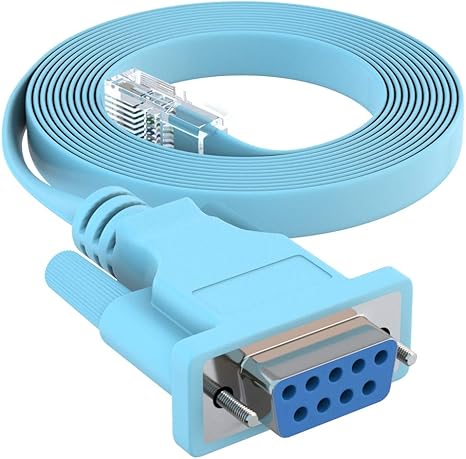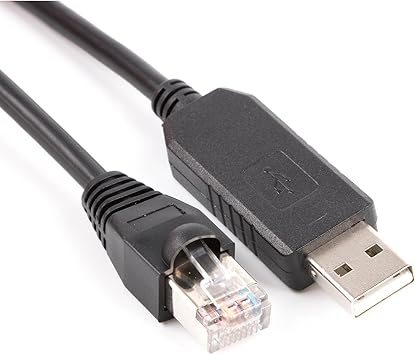Important
This will allow you to connect a serial device to a computer that does not offer a serial port through a USB to Serial adapter. This is a useful when you still need to connect and use a legacy serial device with a new computer. Typical serial device connections include DB9, and DB25. C2G has adapters for each of these connections! These devices can also interface to a host using the direct access driver. These drivers are static examples detailed in Application Note 197: The Serial Communications Guide for the CP210x. The CP210x Manufacturing DLL and Runtime DLL have been updated and must be used with v 6.0 and later of the CP210x Windows VCP Driver.
- Connecting to a serial console on most firewalls requires the correct hardware on every part of the link, including: The client PC must have a physical serial port or a USB-to-Serial adapter. The firewall must have a physical serial port. A null modem serial cable and/or adapter, or a device-specific serial cable.
- Memorise SRX300 usb serial console driver January 8, 2017. Please check if the USB console driver available on the below link works for you.
Netgate is offering COVID-19 aid for pfSense software users, learn more.
A connection to the console on the target hardware is a requirement to run theinstaller.
For hardware with a VGA console, this is as simple as connecting a monitor andkeyboard.
For hardware with a serial console, the process is more involved and requires aclient PC with an appropriate port and terminal software. Follow theinstructions below to connect using a serial console.
Connecting to a Serial Console¶
The instructions in this section cover general serial console topics. Somedevices, such as firewalls from the Netgate Store, require slightly differentmethods to connect to the serial console. For devices from the Netgate Store,visit the Netgate Documentation for model-specific serial consoleinstructions.
Serial Console Requirements¶
Connecting to a serial console on most firewalls requires the correct hardwareon every part of the link, including:
The client PC must have a physical serial port or a USB-to-Serial adapter
The firewall must have a physical serial port
A null modem serial cable and/or adapter, or a device-specific serial cable
A terminal program on the client, such as PuTTY
The correct serial settings for the client software
For most of the firewalls purchased from the Netgate Store, the only hardwarerequirement is a USB A to Mini-B cable. See Netgate Documentation forspecifics.
In addition to the proper hardware connection, a serial console client programmust also be available on the client PC, and the serial speed and other settingsmust be available.
Locating a Serial Port (Server/Firewall)¶
First, ensure the firewall hardware has a serial port. To use the serialconsole, the hardware must have a physical serial port at COM1. Embeddedunits typically have a DB9 (9-pin) serial port, but some have an RJ45 styleconsole connector with an adapter cable that ends with a DB9 connector.
Connect a Serial Cable¶
First, a null modem serial cable must be connected between the firewall anda client PC. Depending on the serial port and cable being used, a serial cablegender changer may also be necessary to match the available ports.

If a real null modem serial cable is unavailable, a null modem adapter can beused to convert a standard serial cable into a null modem cable.
If the client PC does not have a physical serial port, use a USB-to-Serialadapter.
Locate the Client Serial Port¶
On the client PC, the serial port device name must be determined so that theclient software can be used on the correct port.
Juniper Bx Series Usb Driver
Windows¶
On Windows clients, a physical serial port is typically COM1. With aUSB-to-Serial adapter, it may be COM3. Open Device Manager in Windowsand expand Ports (COM & LPT) to find the port assignment.
Mac OS X¶
On Mac OS X, the name can be tricky for a user to determine since it variesbased on the driver name and type. Some common examples include/dev/cu.SLAB_USBtoUART and /dev/cu.usbserial-<model>.
Linux¶
The device associated with a USB-to-Serial adapter is likely to show up as/dev/ttyUSB0. Look for messages about the device attaching in the system logfiles or by running dmesg.
Note

If the device does not appear in /dev/, check to see if the devicerequires additional drivers.
FreeBSD¶
The device associated with a USB-to-Serial adapter is likely to show up as/dev/cuaU0. Look for messages about the device attaching in the system logfiles or by running dmesg.
Determine Serial Console Settings¶
The settings for the serial port, including the speed, must be known beforea client can successfully connect to a serial console.
Whichever serial client is used, ensure that it is set for the proper Speed(115200), Data Bits (8), Parity (No), and Stop Bits (1). This istypically written as 115200/8/N/1.

Note
Some hardware defaults to a slower speed. This is relevantto the BIOS and initial output, not to pfSense® which defaults to 115200.
Many serial clients default to 9600/8/N/1, so adjusting these settings isrequired to connect. Use 115200/8/N/1 with pfSense regardless of the settingof the hardware/BIOS.
For hardware using BIOS serial speeds other than 115200, change the baudrate to 115200 in the BIOS setup so the BIOS and pfSense are both accessiblewith the same settings. Refer to the hardware manual for information on settingits baud rate.
115200 is the default speed pfSense uses out of the box, but the serialspeed used by pfSense can be changed later. SeeSerial Console Speed.
Locate a Serial Client¶
A serial client program must be used on the client PC. The most popular clientfor Windows is PuTTY, which is free and works well. PuTTY is alsoavailable for Linux and can be installed on OS X using brew. On UNIX andUNIX-Like operating systems, the screen program is readily available oreasily installed and it can also be used to connect to serial ports from aterminal program or system console.
Windows¶
PuTTY is the most popular free choice for serial communication on Windows.SecureCRT is another client that works well.
Warning
Do not use Hyperterminal. Even if it is already present on theclient PC, it is unreliable and prone to formatting incorrectly and losingdata.

Mac OS X¶
On Mac OS X clients, the GNU screen utility is the easiest and most commonchoice. ZTerm and cu (similar to FreeBSD) can be used as well.
Linux¶
On Linux clients, the GNU screen utility is the easiest and most commonchoice. Programs such as PuTTY, minicom, or dterm can be used as well.
FreeBSD¶
On FreeBSD clients, the GNU screen utility is the easiest and most commonchoice.
As an alternative, use the built-in program tip. Typing tipcom1 (Ortipucom1 if using a USB serial adapter) will connect to the first serialport. Disconnect by typing ~. at the start of a line.
Start a Serial Client¶
Now that all of the requirements have been met, it is time to run the serialclient.
If the client software is not covered in this section, consult its documentationto determine how to make a serial connection.
PuTTY¶
Juniper Usb To Serial Driver 3 3 2 102
Start PuTTY
Select Serial for the Connection Type
Enter the serial port device name for Serial Line, e.g.
COM3or/dev/ttyUSB0.Enter the appropriate Speed, e.g.
115200Click Open
MINICOM¶
GNU screen¶
Usb To Serial Driver Juniper
Open a terminal / command prompt
Invoke the
screencommand using the path to the serial port, for example:
In some cases there may be a terminal encoding mismatch. If this happens, runscreen in UTF-8 mode:
The standard screen controls apply. Press Ctrl-A, to quit, orCtrl-A, Ctrl- in some cases.
tip¶
Prolific Usb To Serial Driver
The tip command on FreeBSD consults /etc/remotes and connects toserial ports based on the settings there. To setup a connection to aUSB-to-serial adapter at 115200, add a line such as the following to/etc/remote:
To access the port, invoke tip:
Juniper Usb To Serial Driver Updater
To quit, press Enter, then type ~.. If connected through aterminal ssh client, ~~. may need to be used instead so that the sshclient itself doesn’t interpret the keys.